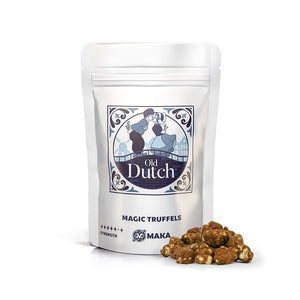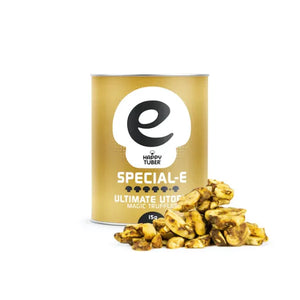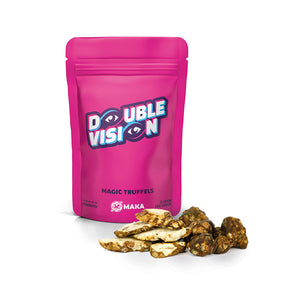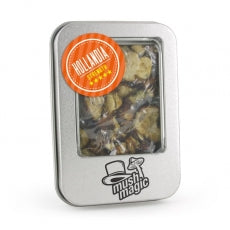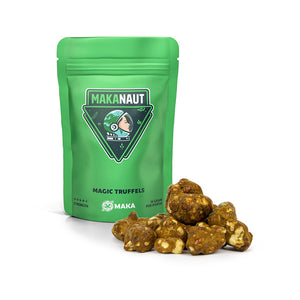Shroomshopy
Raw Cacao Beans Bolivia Ceremonial Grade, 200 grams
Raw Cacao Beans Bolivia Ceremonial Grade, 200 grams
Couldn't load pickup availability
Share
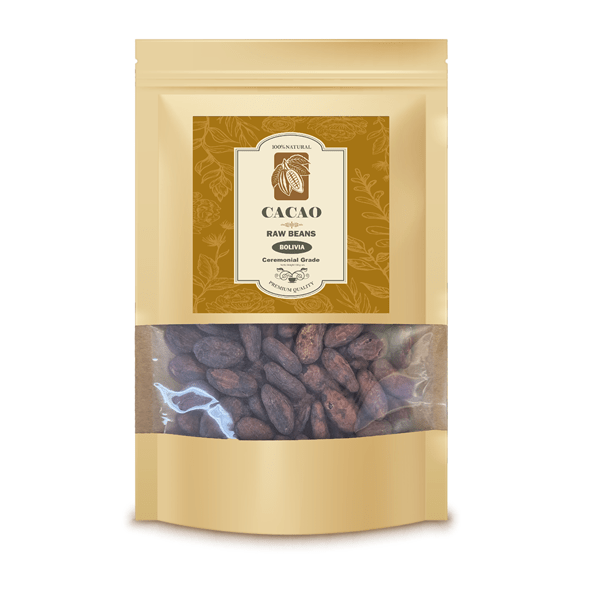
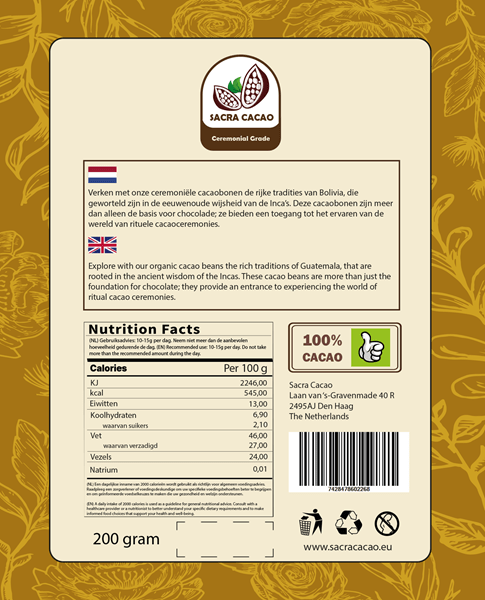
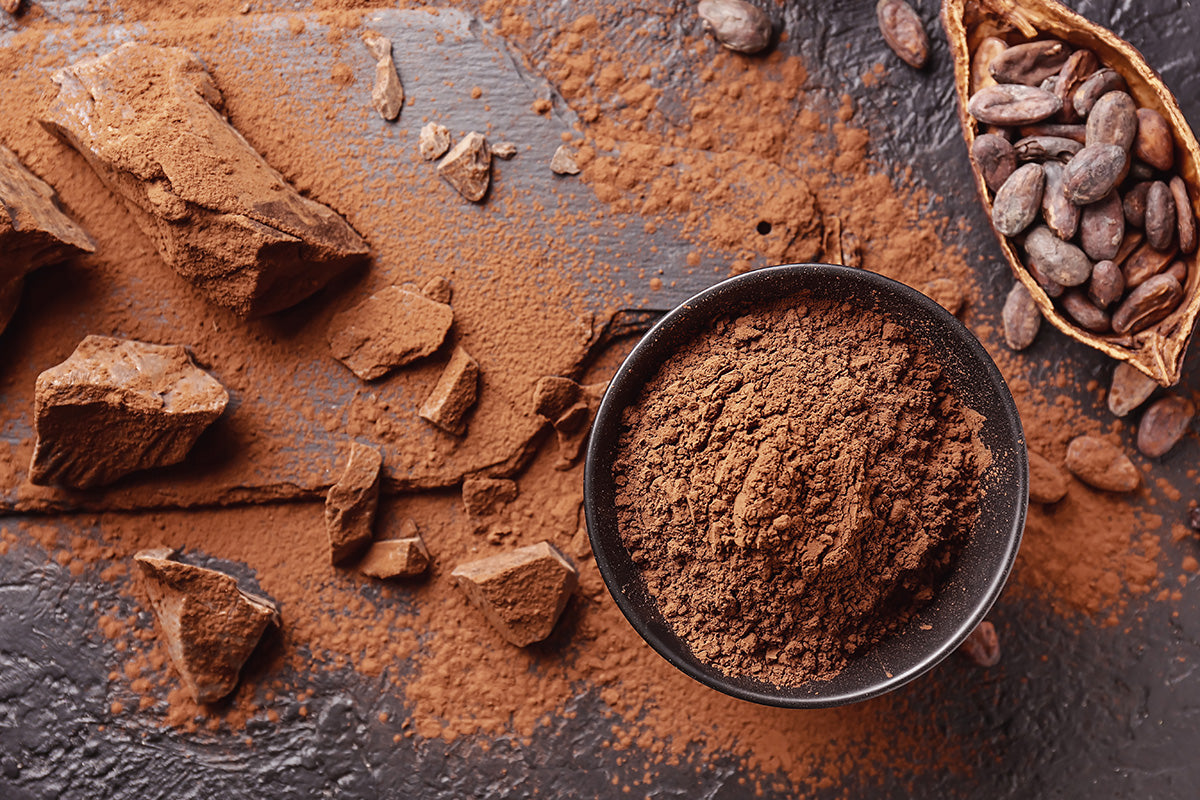
Explore Bolivia's rich traditions, rooted in the ancient wisdom of the Incas, with our ceremonial cacao beans. These cacao beans are more than just the basis for chocolate; they offer a gateway to experiencing the world of ritual cacao ceremonies.
El Ceibo’s Ceremonial Raw Cacao Beans from Bolivia are not only the result of sustainable farming practices, they are also imbued with deep spiritual meaning. For centuries, cacao has played a crucial role in the rituals of Bolivia and many other cultures around the world, where it is valued for its ability to open hearts, enlighten the mind, and create a powerful connection to the divine. At Sacra Cacao, we work closely with cacao farmers in Bolivia. El Ceibo beans are known for their special ability to enhance these spiritual experiences, as they are grown with respect for both the land and the community, and are imbued with the spiritual energy of the region.
The Ceibo
In Bolivia, cocoa is native to the forests of Beni, Cochabamba and the north of La Paz. These beans are supplied by El Ceibo. This is a second-level cooperative, founded in 1977 by 12 grassroots cooperatives. El Ceibo brings together more than 1,200 small producers who are committed to growing organic cocoa in the Alto Beni region. Since 1977, the cooperative has been committed to improving the livelihoods of its members. For many years, El Ceibo, in collaboration with PIAF (Program for implementation of Agro Ecology and Forestry), has been promoting the cultivation of cocoa in agroforestry plantation systems, where cocoa is grown together with fruit crops, medicinal plants and wood.
The fermentation period for indigenous Bolivia Criollos varies from 3 to 4 days, while the hybrids require 7 to 9 days, depending on the weather and other external factors. The beans are fermented in wooden crates, which have small holes in the bottom to facilitate the outflow of cocoa pulp. During fermentation, the beans are turned 3 times every 48 hours and then every 24 hours. After fermentation, the beans are dried until a humidity of 7.5% is reached. During the drying period, the beans are raked 4-5 times a day to achieve a uniform quality.
Cocoa beans rich in various nutrients
Cocoa beans are rich in various nutrients and bioactive compounds that provide various health benefits. Here are some of the main compounds that make cocoa beans healthy for humans:
1. Flavonoids: These natural compounds are known for their antioxidant properties, which can help protect cells in the body from free radical damage. Flavonoids in cocoa, such as epicatechin and catechin, can help reduce inflammation and improve heart health by promoting vasodilation and lowering blood pressure.
2. Magnesium: Cacao beans are an excellent source of magnesium, a mineral essential for over 300 biochemical reactions in the body, including muscle and nerve function, blood sugar regulation, and blood pressure control.
3. Iron: They also contain iron, which is crucial for the transport of oxygen in the blood and can help prevent anemia.
4. Antioxidants: In addition to flavonoids, cocoa beans contain other antioxidants such as polyphenols, which may protect against chronic diseases, including heart disease.
5. Theobromine: This is a mild stimulant found in cacao beans that can help improve mental alertness and reduce fatigue. Theobromine also has a mild diuretic effect and can help improve heart health.
6. Fiber: Cacao nibs are rich in dietary fiber, which can aid in digestion and promote a healthy gut microbiome. Fiber can also help regulate blood sugar levels and support weight management.
7. Healthy Fats: They contain healthy fats like oleic acid, a monounsaturated fat that can help improve cholesterol levels and promote heart health.
Usage
Yes, you can eat raw cacao beans directly or crumble them and add them to food. The taste can be quite bitter and strong, which not everyone likes. You may consider lightly roasting the beans before consumption to soften the flavor and improve the texture, although this may reduce some nutrients.
Use Ceremonial
Preparing cacao beans for ceremonial use is a process that requires respect and attention to the spiritual and cultural significance of cacao. For a single dose of ceremonial cacao drink, an amount of about 20 to 40 grams of raw cacao beans is often recommended. However, this depends on personal preference, the desired strength of the drink, and the specific practice or tradition being followed.
1. Light Dose: For a milder experience, which may be suitable for beginners or those with a higher sensitivity to cacao, you might want to start with about 20 grams of cacao beans.
2. Standard Dose: For a standard ceremonial dose, which aims for a deeper connection and more pronounced effects, 30 to 40 grams of cacao beans are often used.
3. High Dose: Some ceremonies call for a higher dose, perhaps 40 grams or more, depending on the context and the leader of the ceremony. It is important to remember that a higher dose can also increase the chance of side effects such as nausea or overstimulation.
Here is a general guide to preparing cacao beans for ceremonial use, as used in various traditional and contemporary ceremonies:
1. Cleaning
Begin with a physical and energetic cleansing of the space, yourself, and the cacao beans. This may include white sage smoke, palo santo, or another cleansing ritual. For the beans themselves, a simple rinse under running water may suffice, with the intention of cleansing them of any negative energies.
2. Roasting
Roasting the cacao beans helps to develop the flavors and makes it easier to remove the skins. Lightly roast the beans over a low heat, keeping your attention and intention on the process and the ceremony ahead. Stir constantly to prevent burning.
3. Peel
After roasting, let the beans cool. Then peel the skin off each bean. This can be done by hand, sometimes you can roll the beans lightly between your hands or on a clean cloth to facilitate the process.
4. Grinding
The peeled beans can then be ground into a fine paste. This can be done with a hand grinder, a stone mill or a modern food processor. The intention and attention during this process is crucial to preserving the spiritual qualities of the cacao.
5. Preparation of the Drink
Mix the cacao paste with hot water (do not use boiling water as this can damage the active ingredients) and stir well. Traditionally, no sweeteners are added, but depending on the specific ceremony and personal preference, honey, chili, vanilla, or other natural ingredients can be added to enhance the experience.
6. Intention and Prayer
Before the cacao is served, an intention or prayer is said over the drink. This is a time to invoke the spirit of cacao and ask for permission and blessings for the ceremony.
7. Consumption
The cacao drink is consumed in a ceremonial context, often in a circle and with the guidance of a facilitator or shaman. Participants may be encouraged to meditate on their intention, share in a circle, or participate in other ritual practices.
8. It is important to remember that respect for cacao and the cultures that have used this sacred plant for centuries is central to any ceremony. Ceremonial use of cacao is a powerful way to connect with your heart, with others, and with the earth.
Ingredients
100% Ceremonial Raw Cacao Beans from Bolivia.
Contents
Ceremonial Raw Cacao Beans Bolivia.- 200 grams
Explore Bolivia's rich traditions, rooted in the ancient wisdom of the Incas, with our ceremonial cacao beans. These cacao beans are more than just the basis for chocolate; they offer a gateway to experiencing the world of ritual cacao ceremonies.
El Ceibo’s Ceremonial Raw Cacao Beans from Bolivia are not only the result of sustainable farming practices, they are also imbued with deep spiritual meaning. For centuries, cacao has played a crucial role in the rituals of Bolivia and many other cultures around the world, where it is valued for its ability to open hearts, enlighten the mind, and create a powerful connection to the divine. At Sacra Cacao, we work closely with cacao farmers in Bolivia. El Ceibo beans are known for their special ability to enhance these spiritual experiences, as they are grown with respect for both the land and the community, and are imbued with the spiritual energy of the region.
The Ceibo
In Bolivia, cocoa is native to the forests of Beni, Cochabamba and the north of La Paz. These beans are supplied by El Ceibo. This is a second-level cooperative, founded in 1977 by 12 grassroots cooperatives. El Ceibo brings together more than 1,200 small producers who are committed to growing organic cocoa in the Alto Beni region. Since 1977, the cooperative has been committed to improving the livelihoods of its members. For many years, El Ceibo, in collaboration with PIAF (Program for implementation of Agro Ecology and Forestry), has been promoting the cultivation of cocoa in agroforestry plantation systems, where cocoa is grown together with fruit crops, medicinal plants and wood.
The fermentation period for indigenous Bolivia Criollos varies from 3 to 4 days, while the hybrids require 7 to 9 days, depending on the weather and other external factors. The beans are fermented in wooden crates, which have small holes in the bottom to facilitate the outflow of cocoa pulp. During fermentation, the beans are turned 3 times every 48 hours and then every 24 hours. After fermentation, the beans are dried until a humidity of 7.5% is reached. During the drying period, the beans are raked 4-5 times a day to achieve a uniform quality.
Cocoa beans rich in various nutrients
Cocoa beans are rich in various nutrients and bioactive compounds that provide various health benefits. Here are some of the main compounds that make cocoa beans healthy for humans:
1. Flavonoids: These natural compounds are known for their antioxidant properties, which can help protect cells in the body from free radical damage. Flavonoids in cocoa, such as epicatechin and catechin, can help reduce inflammation and improve heart health by promoting vasodilation and lowering blood pressure.
2. Magnesium: Cacao beans are an excellent source of magnesium, a mineral essential for over 300 biochemical reactions in the body, including muscle and nerve function, blood sugar regulation, and blood pressure control.
3. Iron: They also contain iron, which is crucial for the transport of oxygen in the blood and can help prevent anemia.
4. Antioxidants: In addition to flavonoids, cocoa beans contain other antioxidants such as polyphenols, which may protect against chronic diseases, including heart disease.
5. Theobromine: This is a mild stimulant found in cacao beans that can help improve mental alertness and reduce fatigue. Theobromine also has a mild diuretic effect and can help improve heart health.
6. Fiber: Cacao nibs are rich in dietary fiber, which can aid in digestion and promote a healthy gut microbiome. Fiber can also help regulate blood sugar levels and support weight management.
7. Healthy Fats: They contain healthy fats like oleic acid, a monounsaturated fat that can help improve cholesterol levels and promote heart health.
Usage
Yes, you can eat raw cacao beans directly or crumble them and add them to food. The taste can be quite bitter and strong, which not everyone likes. You may consider lightly roasting the beans before consumption to soften the flavor and improve the texture, although this may reduce some nutrients.
Use Ceremonial
Preparing cacao beans for ceremonial use is a process that requires respect and attention to the spiritual and cultural significance of cacao. For a single dose of ceremonial cacao drink, an amount of about 20 to 40 grams of raw cacao beans is often recommended. However, this depends on personal preference, the desired strength of the drink, and the specific practice or tradition being followed.
1. Light Dose: For a milder experience, which may be suitable for beginners or those with a higher sensitivity to cacao, you might want to start with about 20 grams of cacao beans.
2. Standard Dose: For a standard ceremonial dose, which aims for a deeper connection and more pronounced effects, 30 to 40 grams of cacao beans are often used.
3. High Dose: Some ceremonies call for a higher dose, perhaps 40 grams or more, depending on the context and the leader of the ceremony. It is important to remember that a higher dose can also increase the chance of side effects such as nausea or overstimulation.
Here is a general guide to preparing cacao beans for ceremonial use, as used in various traditional and contemporary ceremonies:
1. Cleaning
Begin with a physical and energetic cleansing of the space, yourself, and the cacao beans. This may include white sage smoke, palo santo, or another cleansing ritual. For the beans themselves, a simple rinse under running water may suffice, with the intention of cleansing them of any negative energies.
2. Roasting
Roasting the cacao beans helps to develop the flavors and makes it easier to remove the skins. Lightly roast the beans over a low heat, keeping your attention and intention on the process and the ceremony ahead. Stir constantly to prevent burning.
3. Peel
After roasting, let the beans cool. Then peel the skin off each bean. This can be done by hand, sometimes you can roll the beans lightly between your hands or on a clean cloth to facilitate the process.
4. Grinding
The peeled beans can then be ground into a fine paste. This can be done with a hand grinder, a stone mill or a modern food processor. The intention and attention during this process is crucial to preserving the spiritual qualities of the cacao.
5. Preparation of the Drink
Mix the cacao paste with hot water (do not use boiling water as this can damage the active ingredients) and stir well. Traditionally, no sweeteners are added, but depending on the specific ceremony and personal preference, honey, chili, vanilla, or other natural ingredients can be added to enhance the experience.
6. Intention and Prayer
Before the cacao is served, an intention or prayer is said over the drink. This is a time to invoke the spirit of cacao and ask for permission and blessings for the ceremony.
7. Consumption
The cacao drink is consumed in a ceremonial context, often in a circle and with the guidance of a facilitator or shaman. Participants may be encouraged to meditate on their intention, share in a circle, or participate in other ritual practices.
8. It is important to remember that respect for cacao and the cultures that have used this sacred plant for centuries is central to any ceremony. Ceremonial use of cacao is a powerful way to connect with your heart, with others, and with the earth.
Ingredients
100% Ceremonial Raw Cacao Beans from Bolivia.
Contents
Ceremonial Raw Cacao Beans Bolivia.- 200 grams
Secure Payment in Our Online Shop:
Secure Payment in Our Online Shop:
Your order will be shipped quickly and discreetly, without recognizable packaging. Privacy guaranteed.
Your order will be shipped quickly and discreetly, without recognizable packaging. Privacy guaranteed.

